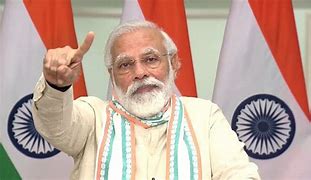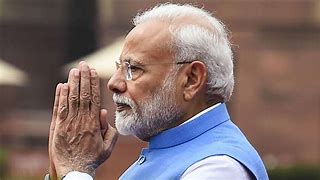Feature
Atal Bihari Vajpayee: A giant in Indian politics

New Delhi: In the six decades he was in electoral politics, the now ailing Atal Bihari Vajpayee, presented the Bharat Ratna on Friday, catapulted from one who lost one election after another to a colossus who eventually became India’s only non-Congress prime minister to last a full five years in office.
In the short but tumultuous period he presided over the destiny of the world’s largest democracy, Vajpayee – the consummate politician – stunned the world by making India a declared nuclear state in 1998 and then almost went to war with Pakistan before making peace in the most dramatic fashion.
In the process, Vajpayee’s popularity came to match that of Indira Gandhi – a woman he admired for her guts even as he hated her politics. He also became the country’s best known national leader after Indira Gandhi and her father Jawaharlal Nehru – until Narendra Modi stole the show in 2014.
Always seen as a moderate in a party where some other leaders espoused Hindutva ideology, the bachelor politician was often called the “right man in the wrong party”.
Success didn’t come easily for Vajpayee, who was born on Christmas Day in 1924 in Gwalior into a family of moderate means. His father was a teacher. Vajpayee would later recall his early brush with poverty.
Vajpayee did his Masters in Political Science, studying at the Victoria College in Gwalior in Madhya Pradesh and at the DAV College in Kanpur in Uttar Pradesh, where he first contested – and lost – elections on behalf of the Bharatiya Jana Sangh, the Bharatiya Janata Party’s predecessor. By then he had embraced the Rashtriya Swayamsewak Sangh (RSS).
But even as he struggled to win electoral battles, his command over Hindi, his ability to agree-to-disagree, and his envious oratory brought him into limelight in a manner that it could never fade away.
His first entry into parliament was in 1962 through the Rajya Sabha. It was only in 1971 that he won a Lok Sabha battle. He was elected to the Lok Sabha seven times in all – and to the Rajya Sabha twice.
Vajpayee spent months in prison when Indira Gandhi imposed Emergency Rule in June 1975. When the Janata Party took office in 1977, dethroning the Congress nationally for the first time, he became the foreign minister.
The lowest point in his career came when he lost the 1984 Lok Sabha election, that too from his birthplace Gwalior. And the BJP he led ended up with just two seats in the 545-member Lok Sabha. In no time, Vajpayee was eclipsed by his long time friend L.K. Advani.
Although they were the best of friends publicly, Vajpayee never fully agreed with Advani’s advocacy of Hindutva. When Hindu mobs razed the Babri mosque in 1992, his was a lone voice in the Hindu nationalist pantheon who didn’t sound happy. When Hindu hardliners celebrated, Vajpayee was full of personal remorse and called it the “worst miscalculation”.
It was precisely this persona of Vajpayee – one merged in Hindutva yet seemingly not wholly willing to bow to it – that won him admirers cutting across the political spectrum. This trait made him the prime minister when BJP’s allies concluded they needed a moderate to steer a hardliner party widely seen as pro-Hindu.
Vajpayee proved to be an astute politician, at times seen as a statesman. He combined the compulsions of politics with his BJP’s rightwing ideology but would seldom budge from the USP of his high ethical pedestal.
His first stint as prime minister in 1996 lasted 13 days, from May 16 to 28. The second one ran for 13 months, from March 19, 1998. But he learnt his lessons from failures to preside over a National Democratic Alliance (NDA) that took office on Oct 13, 1999, and completed a five-year term. His was the first multi-party coalition in India to do so.
His government tested a nuclear device in May 1998, a little over a quarter century after the first such explosion when Indira Gandhi was prime minister. In doing this, and despite global censure, he thrust India into the nuclear club – until then restricted to a privileged few. It was an action that finally resulted in the path-breaking India-US nuclear deal of 2008.
In 1998, Vajpayee launched a widely acclaimed diplomatic initiative by starting a bus service between New Delhi and Lahore in Pakistan. Its inaugural run in February 1999 took Vajpayee to Pakistan. The service was suspended after the 2001 terror attack on Indian parliament that nearly led to war between India and Pakistan.
The freeze between the two countries, including an eyeball-to-eyeball confrontation on the border for nearly a year, was finally cracked in the spring of 2003 when Vajpayee, while in Kashmir, extended a “hand of friendship” to Pakistan.
That led to a historic summit in January 2004 with then president Pervez Musharraf in Islamabad, a remarkable U-turn after the failed summit in Agra of 2001.
Vajapyee was not known as “Atalji”, a name that translates into unyielding, for nothing. He could go against the grain of his party if he saw it deviate from its path. There were times when Vajpayee would withdraw into a shell, due to disagreements with party colleagues, at times forcing them to mollify their icon.
His critics insisted that Vajpayee was only an expedient mask for the Hindutva ideology his party espoused. As prime minister he rebuked his then BJP chief minister Narendra Modi in Gujarat as hundreds died in a communal conflagration in 2002. But he defended him at a party meet days later.
Vajpayee wrote several books and Hindi poetry. He was a master of pauses, an expert at evading replies, often shrugging off tough posers with a huge laugh, a cold stare or a long pause.
When he stepped down in May 2004 after an election that he was given to believe he would win, it marked the end of a long and eventful political career. Almost since then, Vajpayee has suffered from frail health, so much so that the Bharat Ratna was on Friday taken to his house and given to the bed-ridden man.
Entertainment
Meghalaya Reserves Legalized Gambling and Sports Betting for Tourists

The State Scores Extra High on Gaming-Friendly Industry Index
Meghalaya scored 92.85 out of 100 possible points in a Gaming Industry Index and proved to be India’s most gaming-friendly state following its recent profound legislation changes over the field allowing land-based and online gaming, including games of chance, under a licensing regime.
The index by the UK India Business Council (UKIBC) uses a scale of 0 to 100 to measure the level of legalisation on gambling and betting achieved by a state based on the scores over a set of seven different games – lottery, horse racing, betting on sports, poker, rummy, casino and fantasy sports
Starting from February last year, Meghalaya became the third state in India’s northeast to legalise gambling and betting after Sikkim and Nagaland. After consultations with the UKIBC, the state proceeded with the adoption of the Meghalaya Regulation of Gaming Act, 2021 and the nullification of the Meghalaya Prevention of Gambling Act, 1970. Subsequently in December, the Meghalaya Regulation of Gaming Rules, 2021 were notified and came into force.
All for the Tourists
The move to legalise and license various forms of offline and online betting and gambling in Meghalaya is aimed at boosting tourism and creating jobs, and altogether raising taxation revenues for the northeastern state. At the same time, the opportunities to bet and gamble legally will be reserved only for tourists and visitors.
“We came out with a Gaming Act and subsequently framed the Regulation of Gaming Rules, 2021. The government will accordingly issue licenses to operate games of skill and chance, both online and offline,” said James P. K. Sangma, Meghalaya State Law and Taxation Minister speaking in the capital city of Shillong. “But the legalized gambling and gaming will only be for tourists and not residents of Meghalaya,” he continued.
To be allowed to play, tourists and people visiting the state for work or business purposes will have to prove their non-resident status by presenting appropriate documents, in a process similar to a bank KYC (Know Your Customer) procedure.
Meghalaya Reaches Out to a Vast Market
With 140 millions of people in India estimated to bet regularly on sports, and a total of 370 million desi bettors around prominent sporting events, as per data from one of the latest reports by Esse N Videri, Meghalaya is set to reach out and take a piece of a vast market.
Estimates on the financial value of India’s sports betting market, combined across all types of offline channels and online sports and cricket predictions and betting platforms, speak about amounts between $130 and $150 billion (roughly between ₹9.7 and ₹11.5 lakh crore).
Andhra Pradesh, Telangana and Delhi are shown to deliver the highest number of bettors and Meghalaya can count on substantial tourists flow from their betting circles. The sports betting communities of Karnataka, Maharashtra, Uttar Pradesh and Haryana are also not to be underestimated.
Among the sports, cricket is most popular, registering 68 percent of the total bet count analyzed by Esse N Videri. Football takes second position with 11 percent of the bets, followed by betting on FIFA at 7 percent and on eCricket at 5 percent. The last position in the Top 5 of popular sports for betting in India is taken by tennis with 3 percent of the bet count.
Local Citizens will Still have Their Teer Betting
Meghalaya residents will still be permitted to participate in teer betting over arrow-shooting results. Teer is a traditional method of gambling, somewhat similar to a lottery draw, and held under the rules of the Meghalaya Regulation of the Game of Arrow Shooting and the Sale of Teer Tickets Act, 2018.
Teer includes bettors wagering on the number of arrows that reach the target which is placed about 50 meters away from a team of 20 archers positioned in a semicircle.
The archers shoot volleys of arrows at the target for ten minutes, and players place their bets choosing a number between 0 and 99 trying to guess the last two digits of the number of arrows that successfully pierce the target.
If, for example, the number of hits is 256, anyone who has bet on 56 wins an amount eight times bigger than their wager.























